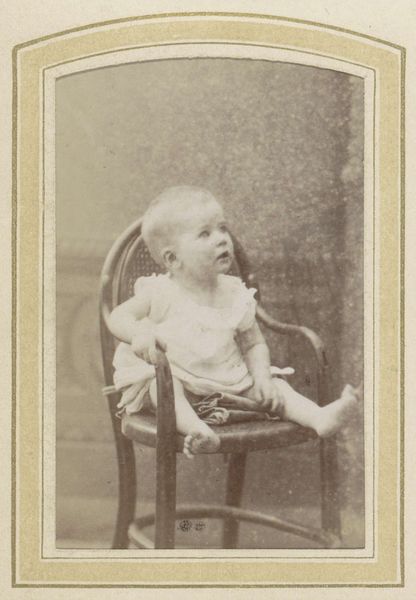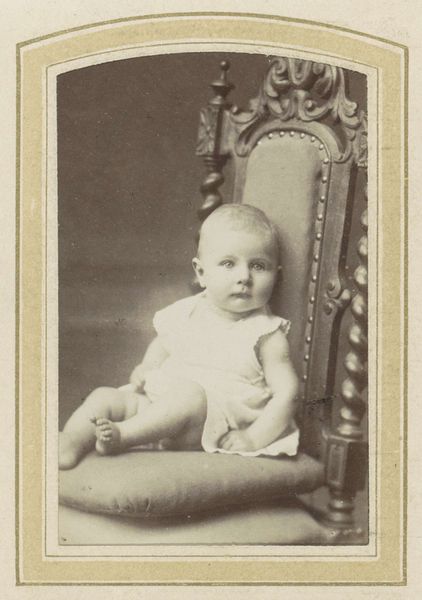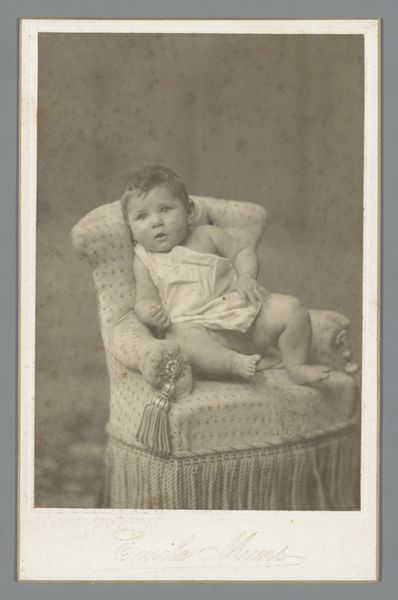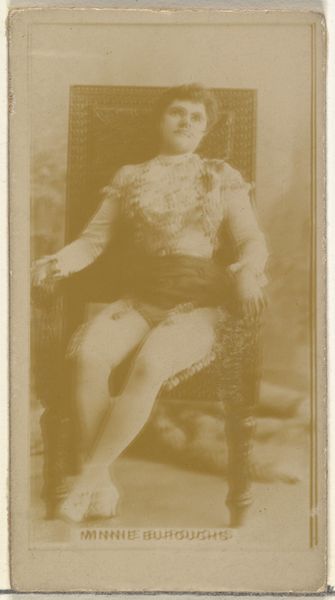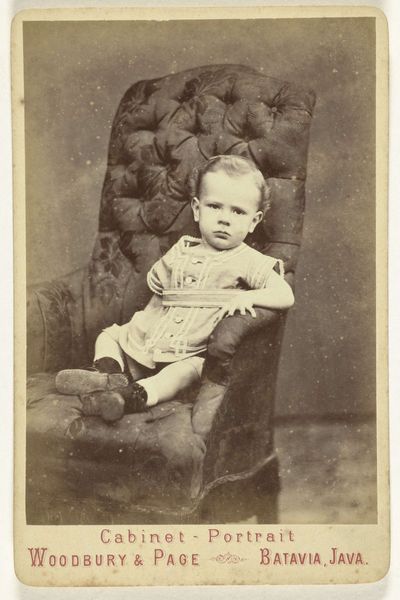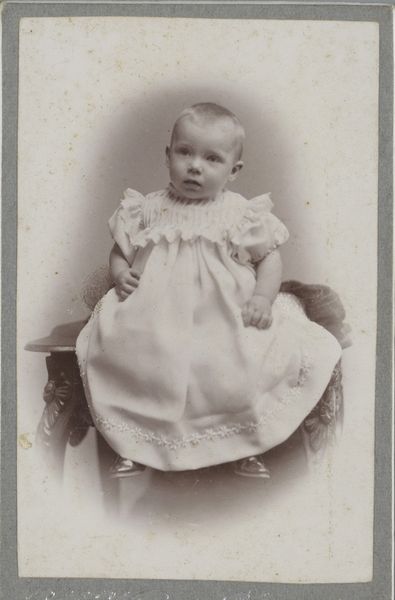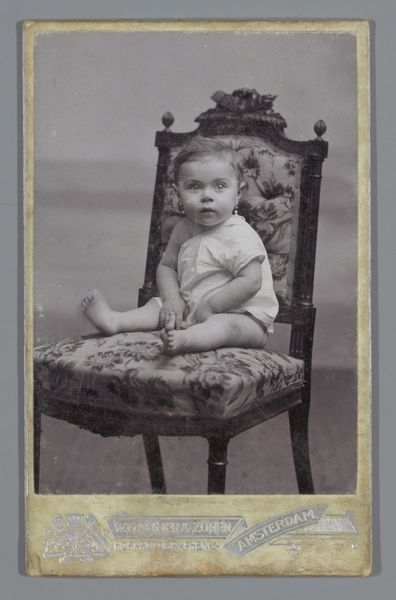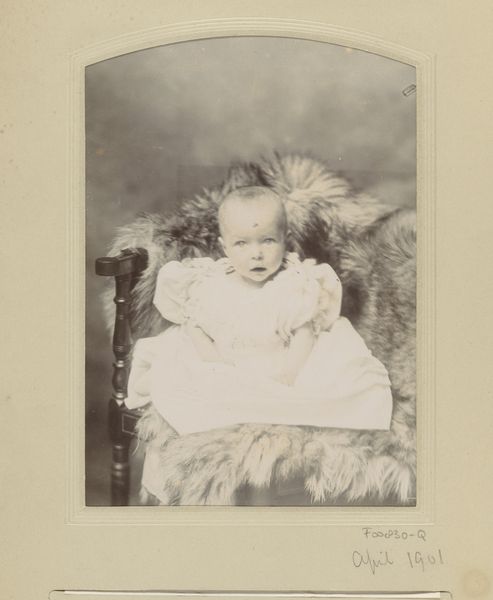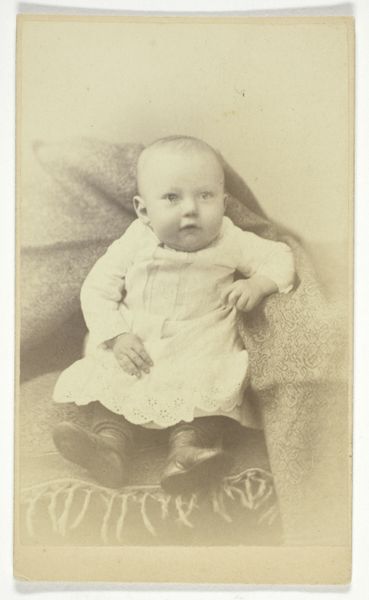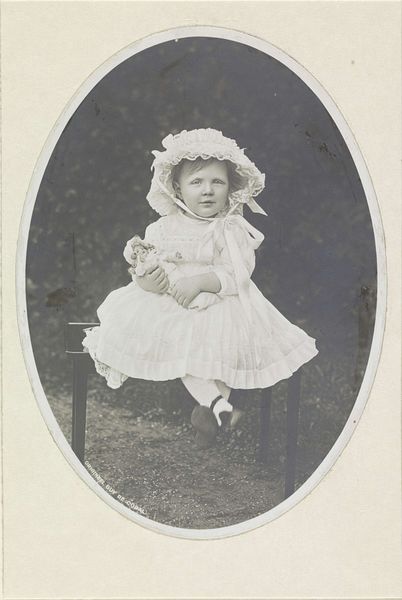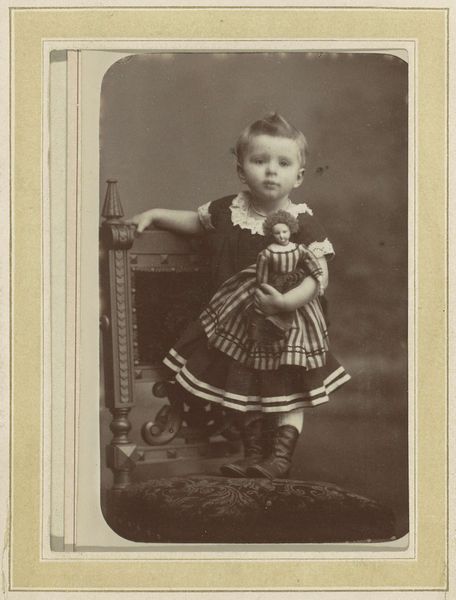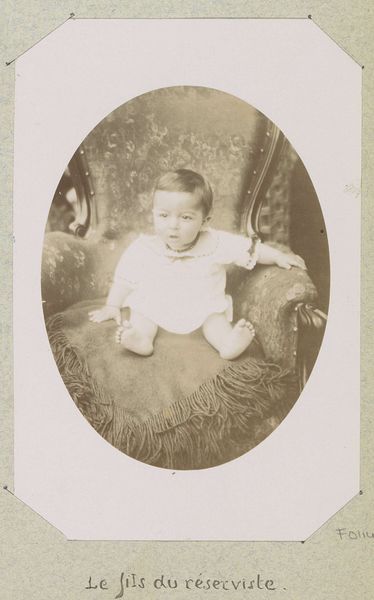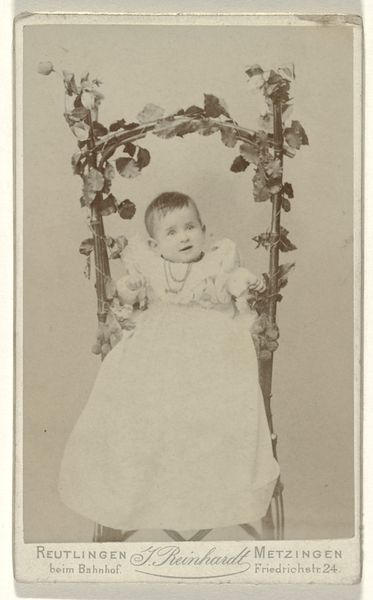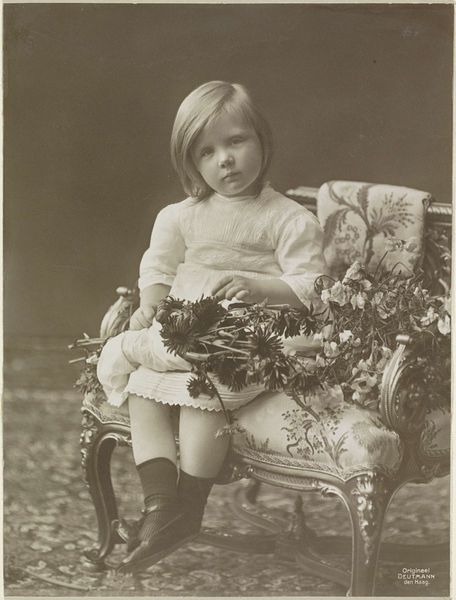
Dimensions: image: 14.2 x 9.9 cm (5 9/16 x 3 7/8 in.) mount: 16.7 x 11 cm (6 9/16 x 4 5/16 in.)
Copyright: CC0 1.0
Curator: Here we have an untitled photograph from William Mills, a studio portrait of a baby from the late 19th century. Editor: The sepia tones give it such a warm, antique feel. And look at the intricate wickerwork of that chair—it really dates the image, doesn't it? Curator: It's a window into a very specific historical moment in portraiture, when photography was becoming more accessible, yet still imbued with a certain formality. Editor: The materials, though—the chair, the drape, even the baby's clothing—they all speak to a certain level of comfort and status, don’t they? Think about the labor involved in creating these textiles. Curator: Precisely. These portraits were commodities, accessible primarily to the middle and upper classes, representing a democratization of art but certainly not a total one. Editor: I agree, it makes you consider who had the means to commission such a portrait. It tells a story about labor, class, and the evolving landscape of photographic practices. Curator: Absolutely, these images offer insight into the cultural values and social hierarchies of the time. Editor: It's fascinating to see how the meaning of materials and portraiture has shifted through history.
Comments
No comments
Be the first to comment and join the conversation on the ultimate creative platform.
